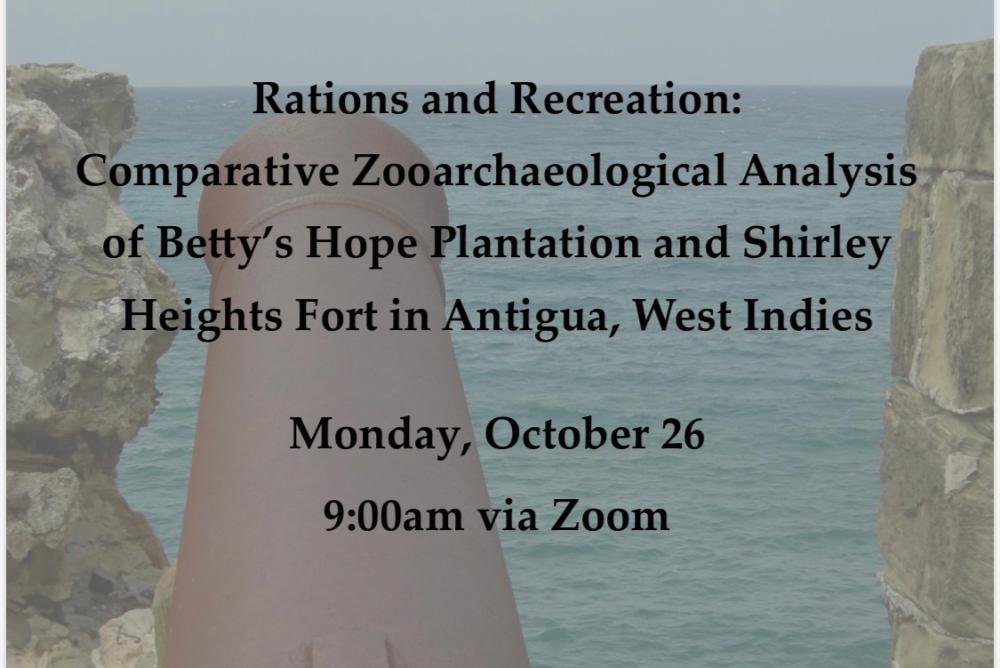W&M Featured Events
[PAST EVENT] Alexis Ohman, Anthropology - Ph.D. Dissertation Defense: "Rations and Recreation"
Location
Washington Hall, (via Blackboard/Zoom)241 Jamestown Rd
Williamsburg, VA 23185Map this location

Betty’s Hope plantation and Shirley Heights fort complex were key features of the colonial-period landscape of Antigua, West Indies. Antigua and its sister island Barbuda are small islands located in the Lesser Antillean chain of the Caribbean. As such, it has long been assumed that these islands and others like them relied more heavily on imported provisions compared to larger islands like Jamaica that implemented significant localized provisioning systems. However, select colonial-period sites throughout the region have begun to produce zooarchaeological data contrary to this assumption via significant contributions of local tropical taxa to the faunal assemblages. Yet the overarching narratives for the islands continue to downplay the importance of these findings.
Combining historical documents and faunal material as the primary lines of evidence allows for integration of broad politico-economic contextualization with the ecological parameters of each Caribbean island. For socially-stratified sites such as plantations and forts, divisions of class and rank are manifested on the landscape. Therefore, differential distribution of faunal material can attest to these various types of provisioning systems. For the colonial Caribbean, existing historical literature has long focused on the long-distance provisioning systems across the Atlantic. Yet the faunal material can also demonstrate short-distance and locally-acquired tropical resources. Thus, these data fill critical lacunae in the documentary evidence about quotidian lifeways and how Caribbean residents adjusted to large-scale political and/or environmental changes through localized solutions within and between islands.
Specifically, my research focuses on re-centering two often-overlooked taxa in historical zooarchaeology: fish and mollusks. These taxa are typically considered to be bulk protein sources, primarily examined via ecological niche exploitation and capture methods utilized. Unfortunately, fish and mollusks are rarely engaged with in the same nuanced ways that other animals are—particularly domesticates—with respect to foodways practices and elite performative dining. In contrast, I argue that these taxa provide critical insight into the ways that specific taxa were differentially utilized in colonial Caribbean plantation and fort contexts. Each context further provided the opportunity to examine expressions of status and access to certain markets and ecological niches for planters, servants, enslaved Africans, officers, and soldiers. Although all taxonomic classes were identified, the fish and mollusks were the most variable taxa within and between the plantation and fort contexts. This research integrates critical data to the region’s corpus of colonial-period faunal research, and addresses distinct lacunae in colonial Caribbean discussions of provisioning and dining.
Contact
For more information about this event, please contact [[w|jdcarlson, Joni Carlson]]
